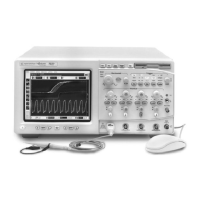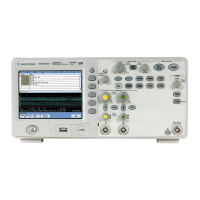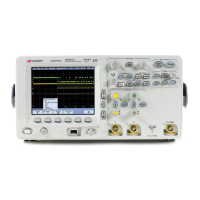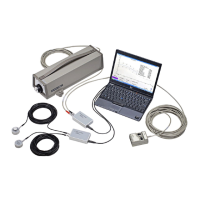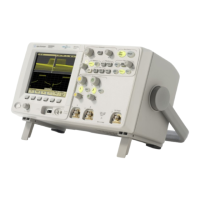Chapter 1: General Information
Specifications & characteristics
1–14
I/O
Notes
CAT I and CAT II Definitions
Installation category (overvoltage category) I: Signal level, special equipment or parts of
equipment, telecommunication, electronic, etc., with smaller transient overvoltages than
installation category (overvoltage category) II.
Installation category (overvoltage category) II: Local level, appliances, portable equipment etc.,
with smaller transient overvoltages than installation category (overvoltage category) III.
File types Waveforms Internal
Yvalues with header
Yvalues with header
XYPairs without header
XYPairs with header
Images BMP, GIF, JPG, PCX, TIF.
Mouse Standard mouse supplied—supports any Microsoft
®
mouse compatible pointing
device, serial, PS/2, or USB.
Operating System Microsoft Windows XP
Waveform Memories 4 nonvolatile waveform reference memories.
LAN RJ-45 connector, supports 10 Base-T and 100 Base-T
GPIB port Fully programmable, complies with IEEE 488.2.
RS-232 (serial) Mouse or Printer port (COM1)
Centronics Parallel printer port
USB (2) Can be used for USB peripherals and pointing device
PS/2 ports (2) Mouse and Keyboard ports
TTL Output TTL compatible trigger output
Video Output 15-pin VGA, full color.
1 Rise Time figures are calculated from: tr=.35/Bandwidth.
2 Magnification is used below the 10 mV/div range and between the major attenuation settings. Full scale
is defined as the major attenuator setting over an intermediate setting.
(Major settings for 50Ω: 10, 20, 50, 100, 200, 500, 1000 mV
Major settings for 1 MΩ: all as for 50Ω plus 2 V)
3N/A
4 For bandwidth limited signals, tr >=1.4 x sample interval.
5 FFT amplitude readings are affected by input amplifier roll-off (-3 dB, with amplitude decreasing as
frequency increases above 500 MHz in 1 MΩ, 600 MHz in 50Ω for Agilent 54830/31B/D, 1 GHz in 50Ω for
Agilent 54832B/D & 54833A/D).

